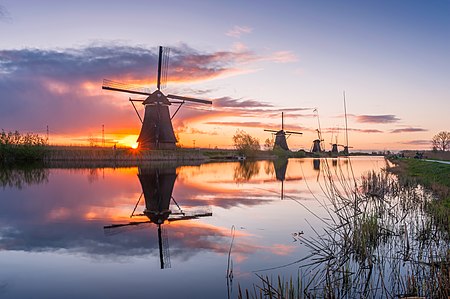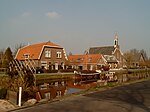Molenwaard

Molenwaard (Dutch pronunciation: [ˈmoːlə(ɱ)ˌʋaːrt]) is a former municipality in the western Netherlands, in the southeastern part of the province of South Holland, and the northwestern part of the region of Alblasserwaard. It was the result of a merger of the municipalities of Graafstroom, Liesveld, and Nieuw-Lekkerland on 1 January 2013. On 1 January 2019 it merged with Giessenlanden, together they form the new municipality of Molenlanden. Molenwaard had about 29,000 inhabitants and an area of about 126 km2 (49 sq mi). The largest settlements are Bleskensgraaf, Groot-Ammers, and Nieuw-Lekkerland. Molenwaard can be characterized as a landscape of polders existing of vast pastures traversed by ditches and canals, like the Groote- of Achterwaterschap, and the Ammersche Boezem. In the outermost northwest one can find the famous windmills of Kinderdijk. About 1.5 m below sea level, the municipality is bordered by the Lek river in the north and briefly the Noord river in the west. On its area flows the Graafstroom or the Alblas. Religiously, the municipality is part of the Bible Belt, resulting in the dominance of the Christian parties in politics.
Excerpt from the Wikipedia article Molenwaard (License: CC BY-SA 3.0, Authors, Images).Molenwaard
Melkweg, Molenlanden
Geographical coordinates (GPS) Address Nearby Places Show on map
Geographical coordinates (GPS)
| Latitude | Longitude |
|---|---|
| N 51.866666666667 ° | E 4.7833333333333 ° |
Address
Melkweg 21
2971 VK Molenlanden
South Holland, Netherlands
Open on Google Maps










